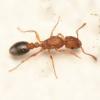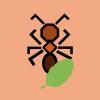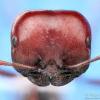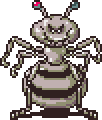HI guys! Its been quite a while since I have posted here and plan on updating my Atta Mexicana journal tomorrow. My colony has been getting quite big and they cut leaves every day so naturally I have a separate feeding area for them. The feeding area got quite damp since I don't want the leaves or flowers to get dry. However it got to the point where I couldn't see inside because of the condensation. So I put some fluon on the lid and took the lid off so it could air out. I always have the light on over their feeding area to simulate day and night since I don't want the colony getting too big too fast. Unfortunately, some of the Wax Worms for my bearded dragon escaped and pupated into moths. Apparently a moth flew inside the foraging area trying to get to the light. At this point I wasn't there. All I saw was them dragging a moth through the tubes when I was there. The moth was giving them a hard time but eventually they did kill it. I was expecting them to drag the moth to the garbage bin but no. They dragged the moth to the fungus chamber where they chopped it up to pieces and the workers and soldiers were consuming it. I'm surprised and not so surprised at the same time. I do see them cannibalize the brood now and then. I would like to hear thoughts on this matter.
Thanks for reading!

























